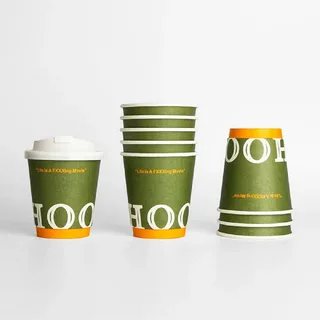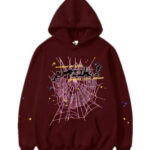As people become more aware of the environment, they look for better ways to reduce waste. One of the best changes is switching from single-use plastic cups to reusable ones. The demand for custom reusable cups is growing. But what really matters is the kind of materials used to make these cups. Choosing eco-friendly materials helps protect the earth while offering strong, safe, and stylish drinkware.
Bamboo Fiber: A Renewable Natural Choice
Bamboo is one of the fastest-growing plants in the world. It can grow without the need for harmful chemicals or pesticides. This makes bamboo fiber a highly renewable and natural resource. Bamboo fiber is often used in making reusable cups because it is light, strong, and biodegradable.
This material is also antibacterial, which means it resists bacteria better than many other options. That makes it safer for long-term use. Bamboo cups are easy to wash and maintain. They are also heat-resistant, which allows them to be used for both hot and cold drinks.
Another great thing about bamboo is that it breaks down naturally at the end of its life cycle. Unlike plastic, it doesn’t stay in landfills for hundreds of years. By choosing bamboo fiber, users help reduce pollution and support sustainable farming.
In addition to being practical, bamboo cups also have a smooth, stylish look. They can be customized easily with natural dyes and prints. This makes them perfect for people or businesses that want to promote eco-conscious branding. When customers choose bamboo cups, they make a clear statement about their commitment to the planet.
Cornstarch-Based Polymers: A Bioplastic Alternative
Cornstarch-based bioplastics, also known as PLA (polylactic acid), are becoming popular for reusable cups. These materials are made from fermented plant starch. The result is a plastic-like substance that is compostable under the right conditions.
Cornstarch cups are non-toxic and food safe. They are suitable for daily use and do not release harmful chemicals. These cups are also odorless, which adds to the user experience. PLA is known for its smooth surface and lightweight feel.
Though they look and feel like traditional plastic, these cups break down much faster. In commercial composting systems, PLA can decompose within 90 days. This is a great improvement compared to petroleum-based plastics, which can take centuries.
However, PLA cups should not be exposed to high heat, as they may deform. Still, they work perfectly for cold and room temperature drinks. For customers who want to avoid plastic but still enjoy modern design and comfort, PLA is a strong choice.
More businesses, like those offering https://ibexpackaging.com/custom-cups/, now provide customized PLA cups. This option balances sustainability with style. With proper use and disposal, cornstarch-based materials help cut down on plastic waste while meeting customer needs.
Recycled Stainless Steel: Durable and Long-Lasting
Stainless steel is already known for being strong and long-lasting. When made from recycled materials, it becomes an even more eco-friendly choice. Recycled stainless steel cups reduce the need for new raw materials and save energy in the production process.
These cups are almost unbreakable, which makes them ideal for both indoor and outdoor use. They are perfect for travel, picnics, or just regular home use. Stainless steel keeps drinks hot or cold for hours. This insulation feature makes them very convenient.
Because they don’t absorb flavors or odors, they are great for repeated use. They are also easy to clean and dishwasher safe. These qualities help make them a favorite for people who care about both durability and the planet.
The look of stainless steel can be customized with color coatings, engravings, or silicone sleeves. This allows users to keep things stylish without sacrificing function. Recycled steel cups offer a strong return on investment. They can last for many years, which reduces the need for replacements.
By choosing this material, people support the recycling industry and reduce landfill waste. This is a great example of combining practicality with responsibility.
Wheat Straw: A Byproduct Turned Sustainable Material
Wheat straw is the leftover stalk from wheat harvests. Instead of burning it or throwing it away, this byproduct is now being turned into a useful material. Cups made from wheat straw are light, strong, and biodegradable.
They are made by combining wheat straw fibers with food-safe binding agents. The result is a reusable cup that can handle daily use. It feels smooth and looks natural, often with small flecks that give it a unique style.
One of the best things about wheat straw cups is that they are made from what would otherwise be waste. This helps reduce pollution from farming. Instead of letting the straw rot or burn, it is turned into a useful product.
These cups are also microwave-safe and dishwasher-safe. This makes them easy to use and maintain. Although they are strong, they will naturally break down over time, especially under composting conditions.
Wheat straw is a smart, zero-waste option. It adds value to something that was once useless. Choosing wheat straw cups is a small but powerful step toward greener living.
Coconut Shells: A Natural and Rustic Material
Coconut shells are another farm byproduct that has found new life in reusable cups. Once the coconut meat and water are used, the shell is often discarded. But now, these shells are polished, shaped, and used to make natural drinking cups.
Coconut cups are strong and durable. They have a unique look that appeals to nature lovers. Each cup is one-of-a-kind due to the natural shape and grain of the coconut. These cups are also lightweight, easy to carry, and very eco-friendly.
The inner part is often coated with a food-grade polish to make it safe and waterproof. This ensures that drinks do not leak or leave a bad taste. These cups are best for cool or room-temperature drinks, as high heat may affect the shell.
One benefit of coconut shell cups is that they are 100% natural. They don’t need much processing or added chemicals. When they reach the end of their life, they break down easily. This makes them one of the most sustainable choices available.
Coconut cups also support rural farming communities. By buying products made from coconut shells, customers help increase the income of farmers and reduce waste.
Hemp-Based Composites: Strong and Eco-Conscious
Hemp is one of the oldest and most sustainable plants known to man. It grows quickly, needs little water, and doesn’t require pesticides. When mixed with other natural binders, hemp fibers form a durable composite suitable for custom reusable cups.
Hemp cups are lightweight and strong. They can handle heat, making them safe for hot drinks. They are also biodegradable over time, depending on the mix of materials used. This makes them a good option for people who want both strength and sustainability.
Hemp also absorbs less water than other natural fibers. This means the cups are less likely to get moldy or break down with use. Hemp-based materials are non-toxic and safe for food contact, offering peace of mind to users.
From an environmental point of view, hemp captures a lot of carbon while it grows. This helps reduce greenhouse gases. It also improves soil health, making it a great crop for farmers.
More brands are now offering hemp-based options for reusable cups. The mix of strength, light weight, and environmental benefits makes hemp a top-tier choice in the green materials list.
Rice Husk: A Lightweight Agricultural Waste Material
Rice husks are the protective shells removed from rice grains during processing. These husks are often burned or thrown away. But they can also be used to make lightweight and durable cups.
Rice husk cups are a smart way to reuse agricultural waste. They are often blended with other biodegradable binders to form a tough material. The result is a smooth, reusable cup that looks earthy and natural.
These cups are heat-resistant and dishwasher safe. They can be used for both hot and cold drinks. They are also free from harmful chemicals like BPA. This makes them safe and user-friendly.
Rice husk cups are biodegradable under the right conditions. This means they will break down instead of adding to landfills. They are also odor-resistant and do not affect the taste of drinks.
Since rice is grown worldwide, husks are a readily available resource. Turning them into useful products supports zero-waste goals and helps reduce carbon footprints.
Silicone: A Flexible and Recyclable Option
Silicone is made from sand and is a type of rubber-like material. It’s non-toxic, flexible, and long-lasting. Reusable cups made from silicone are often foldable and easy to carry, which makes them popular for people on the go.
One major benefit of silicone is its heat resistance. It can handle both hot and cold drinks without breaking down. It’s also microwave and dishwasher safe. These features make it very convenient.
Silicone does not leach harmful chemicals into drinks. It is also easy to clean and does not hold odors. While not biodegradable, silicone is recyclable in special facilities. With proper care, silicone cups can last many years, reducing waste overall.
Its flexibility makes it ideal for collapsible cup designs. These are great for travel and outdoor use. More companies now offer stylish silicone cups that can be customized in shape, color, and design.
While silicone may not be as natural as some other materials, its durability and safety make it a reliable green choice.
Conclusion
Switching to eco-friendly materials for reusable cups is a meaningful way to protect the planet. Whether it’s bamboo, hemp, wheat straw, or stainless steel, each material offers unique benefits. They reduce waste, support sustainable farming, and provide safe alternatives to plastic. By selecting the right materials, we not only improve daily habits but also contribute to a cleaner, greener future.


